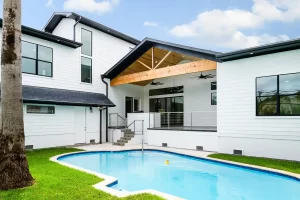In the realm of building contractors navigating flood zone projects, challenges abound, impacting timelines and budgets. From intricate permitting processes to stringent building codes, the terrain is tough. Amidst these hurdles, one vital strategy often overlooked is political advocacy. Through engaging policymakers, contractors can influence the regulations governing their work, ensuring their insights drive superior outcomes. How to remodel in flood zones contractors anticipate from advocacy efforts, and how can they embark on this path?
Key Takeaways
- 75% of flood zone projects require specialized advocacy, ensuring compliance with flood-resistant standards and benefiting contractors and communities.
- Proactive political advocacy enhances projects, influences policy decisions, and shapes regulations that benefit both industry and community.
- Advocacy efforts provide insights on successful remodeling in flood zones, ensuring resilience and durability in projects.
- Contractors engaging in advocacy efforts can avoid costly delays, ensure successful project execution, and elevate their professional reputation.
- By understanding regulatory requirements, contractors can leverage political advocacy to improve project outcomes and advance industry interests.
Flood Zone Remodeling Challenges
Numerous building contractors encounter significant obstacles when undertaking remodeling projects in flood zones, primarily due to the stringent regulations and unique requirements imposed by these areas. To successfully remodel flood zones, contractors must navigate complex permitting processes, adhere to elevated building codes, and incorporate specialized materials and designs to guarantee flood resilience.
Advocacy for Flood-Resistant Construction
Approximately 75% of flood zone remodeling projects require specialized advocacy to guarantee compliance with flood-resistant construction standards, underscoring the critical need for building contractors to engage in proactive political advocacy efforts. Effective advocacy ensures that how to remodel in flood zones is done with resilience and durability in mind, ultimately benefiting both contractors and communities.
Navigating Local Flood Zone Regulations
Building contractors engaged in flood zone projects must navigate a complex web of local regulations, which often vary greatly from one jurisdiction to another, highlighting the significance of thorough research and understanding of these requirements to guarantee successful project execution. Familiarity with flood zone maps, zoning ordinances, and building codes is essential to secure compliance and avoid costly delays.
How to Remodel in Flood Zones Successfully
To guarantee a successful remodel in a flood zone, it is essential to develop a thorough project plan that incorporates flood-resistant design and construction methods, while also meeting the specific requirements outlined in local flood zone regulations. Here are key considerations for how to remodel in flood zones:
- Elevate electrical and mechanical systems above the base flood elevation
- Use flood-resistant materials and finishes
- Design the structure to withstand flood loads and velocities
Leveraging Political Advocacy for Contractors
Effective flood zone remodeling projects rely on a deep understanding of regulatory requirements, and contractors can further enhance their projects by leveraging political advocacy to influence policy decisions that impact their work. By engaging with policymakers, contractors can provide valuable insights on how to remodel flood zones successfully, shaping regulations that benefit both the industry and the community.

Frequently Asked Questions
What Insurance Options Are Available for Flood Zone Construction Projects?
For flood zone construction projects, available insurance options include National Flood Insurance Program (NFIP) policies, private flood insurance, and excess flood insurance, which provide varying levels of coverage and protection against flood-related damages and losses.
How Do I Determine the Flood Zone Designation for a Property?
To determine a property’s flood zone designation, consult the Federal Emergency Management Agency’s (FEMA) Flood Insurance Rate Maps (FIRMs) or Flood Map Service Center (MSC), which provide accurate and up-to-date flood zone information.
Can I Rebuild in the Same Location After a Flood Event?
Following a flood event, rebuilding in the same location is possible, but subject to compliance with local floodplain management regulations and obtaining necessary permits, ensuring the new structure meets or exceeds flood-resistant construction standards.
What Are the Tax Implications of Flood-Resistant Construction Materials?
When incorporating flood-resistant construction materials, tax implications vary by location and material type, with potential benefits including tax credits, deductions, and exemptions, depending on local and national incentives for flood mitigation and resilience.
Are There Any Government Incentives for Flood Zone Remodeling Projects?
Yes, government incentives exist for flood zone remodeling projects, such as FEMA’s Flood Mitigation Assistance Program, offering grants for flood-resistant construction, and tax credits for energy-efficient upgrades, encouraging resilient rebuilding.
Conclusion
To sum up, effective political advocacy is essential for building contractors working on flood zone projects. By engaging in advocacy efforts, contractors can navigate complex permitting processes, adhere to elevated building codes, and access specialized materials and designs. This enables the successful remodeling of flood-prone areas, ensuring compliance with flood-resistant standards and promoting resilience and durability.
You May Also Like To Read: